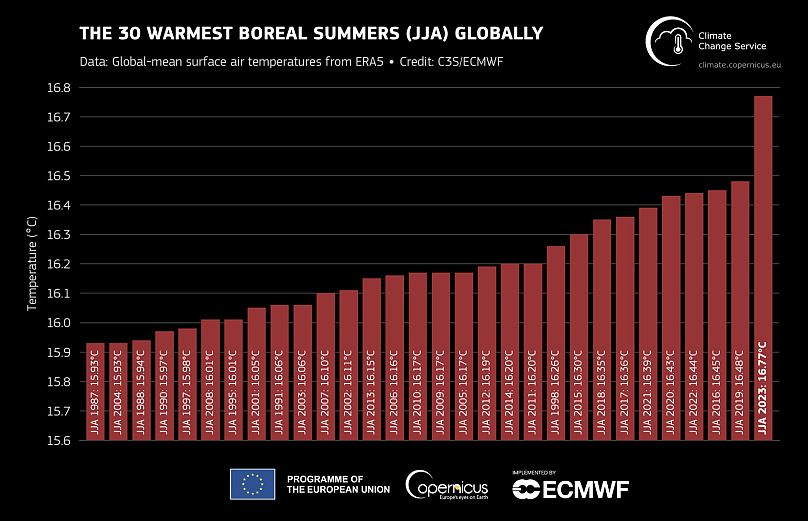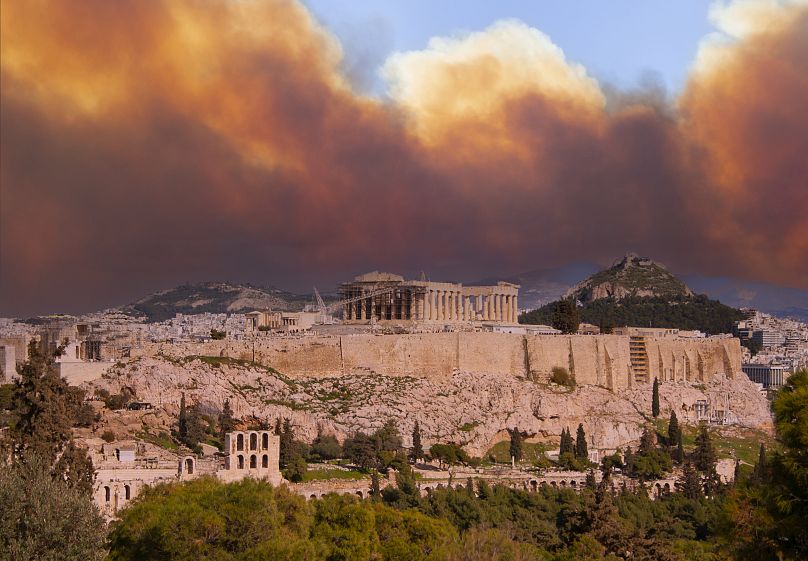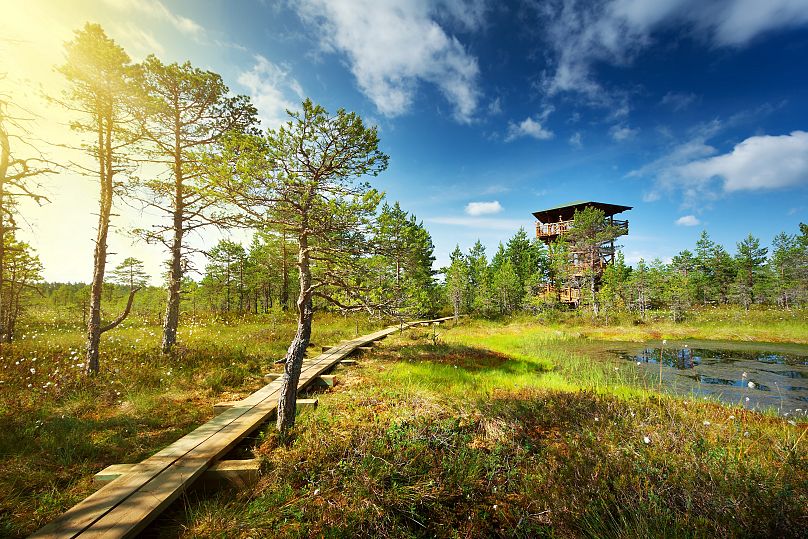By Annabel Murphy
Rattled by deadly floods in Greece, wildfires in Tenerife and extreme temperatures in southern Italy during the 2023 summer holiday period, more people have woken up to the impacts of climate change and travel preferences are changing, according to research conducted by the European Travel Commission (ETC).
The survey, conducted on a quarterly basis by the ETC, aims to gauge tourism behaviour so national tourism boards can respond to preferences and trends. 14 per cent of respondents, an increase of seven per cent from when the previous survey was conducted, cited ‘extreme weather event’ as their primary concern.
Climate change now poses a major threat to one of Europe’s most important economic sectors. The tourism and travel industry employs over 22 million people and generates approximately 10 per cent of Europe’s gross domestic product (GDP).
The impacts on the economy and businesses aren’t the only risks. A hotter, more volatile climate affects the very things that make a destination attractive in the first place, such as biodiversity, cultural attractions and iconic sites.
With many incidents of devasting weather events this past summer, experts are urging the industry to prepare for potentially more prolonged summer periods and extreme weather events.
2023 climate data puts Europe in uncharted territory
The record-breaking temperatures reported this past summer help explain the severity and frequency of extreme weather events across Europe.
According to data published by Copernicus Climate Change Service (C3S), the average temperature across Europe this summer was 19.63°C, 0.83°C above previous averages. The increase in average temperatures makes 2023 the fifth warmest summer ever recorded.
Temperatures during the peak tourist period of June-July-August were globally the warmest on record by a large margin, with an average temperature of 16.77°C, which is 0.66°C above average.
September and October, typically the time when temperatures in the Northern Hemisphere decline, led to more record breaking data.
September was the hottest on record - 0.5°C above the previous warmest September in 2020 and October was the warmest October on record globally, with an average surface air temperature of 15.30°C, 0.85°C above the 1991-2020.
Based on temperature anomalies recorded this year, scientists at C3S concluded with “near certainty” that 2023 will be the warmest year on record, and is currently 1.43ºC above the preindustrial average.
The figures - and the extent to which they are increasing - illustrate how rapidly our climate is changing. With rising temperatures globally, the frequency and intensity of extreme weather events is also changing, says Samantha Burgess, deputy director at Copernicus Climate Change Service.
“A goal of the Paris Agreement is to limit the global average temperature increase to 1.5°C above pre-industrial levels. When you look at the data from this summer and how fast temperatures are rising, it’s very alarming,” she said.
“Like all sectors impacted by climate change, the tourism industry needs to adapt as much as they can for a changing climate because we are in uncharted territory. Major tourist locations are often on the front line of extreme event impacts with wildfires and heatwaves being particularly common events in recent years.
“Obviously these extreme events not only impact visitors to these locations but also the communities and businesses who depend on these national and international visitors for their livelihoods.”
Bracing for potential shifts in travel patterns
With hotter summer weather patterns and more extreme events occurring at the end of summer - how can the industry best adapt to changing tourism preferences and prepare for climate change?
According to Eduardo Santander, executive director of the ETC, climate change impacts the seasonality and quality of tourism at a particular destination and that’s something businesses should pay close attention to.
Some tourist groups are choosing to holiday in northern summer destinations, such as Ireland, Denmark and the Czech Republic whilst travellers planning to visit the Mediterranean during the peak season were down by 10 per cent, compared with last year.
The ETC says it is likely climate change will also impact the seasonality of activities, for instance, outdoor tourism activities such as hiking, boating and sports could become more appropriate in spring and autumn when temperatures are lower.
Winter sports, on the other hand, may be negatively impacted by reduced snowfall from rising temperatures and businesses affected by this will need to find new solutions and adapt accordingly.
“The tourism industry is extremely robust but it needs to innovate, adapt and change - some of these changes will be incremental and easier to implement, whereas others, such as the transition to net zero and more circular businesses will be a challenging but a necessary process,” Santander said.
The transition to a more sustainable industry
Attracting tourists during ‘shoulder seasons’ or planning outdoor activities outside of the hottest times are examples of incremental changes to improve the comfort of a destination.
In the long term, however, many businesses will need to innovate in order to thrive in a net zero economy and service customers who may have very different interests and values in the future.
The Estonian tourism sector is responding to a shift in travel preferences by offering low-carbon holidays and events. Many businesses in the country measure carbon emissions (related to tourists), use local supply chains to source food and serve only vegan and vegetarian options.
“Part of our tourism strategy is to have a strong focus on sustainability by providing environmentally friendly options and doing things differently," said Rainer Aavik, director of the Estonian Tourist Board.
“We believe offering sustainable options as an alternative to carbon-intensive tourism such as cruise ships and holiday packages is something the traveller is looking for and this only increases as the connection grows between extreme climate events and the rising level of greenhouse gas emissions in the atmosphere,” he added.
Climate modelling: Using data to prepare
Climate projections are another way to help the industry adapt to climate change by providing different scenarios of how different the future may look in different locations.
Combining recent satellite and in-situ data with climate predictions of meteorological variables such as wind speed, air temperature and humidity or pressure, it’s possible to derive bespoke indicators which can help businesses, policymakers and other organisations anticipate and plan in advance for changing climate conditions.
Together with The Institute of Environmental Research and Sustainable Development (IERSD), scientists from C3S have worked on developing climate suitability indications that allow a range of climatic variables to be quantified and ranked for particular tourist destinations and activities.
By integrating these indicators with climate projections, this dataset aims to provide an understanding of how a changing climate will impact tourism activities in Europe based on a range of future scenarios of greenhouse gas concentrations.
“Whilst the tourism industry alone can’t stop climate change, it can use the tools available to them to understand how suitable the climate in which they operate is for tourism. These models can serve as an important decision-making tool,” said Christos Giannakopoulos, PhD Atmospheric Modelling at the National Observatory of Athens.
“Knowledge, preparation and action towards a more sustainable industry are key to the long-term resilience of the sector,” he concluded.




